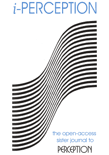
JOURNAL OF VISION
Scope & Guideline
Illuminating the Frontiers of Vision Science
Introduction
Aims and Scopes
- Visual Perception Mechanisms:
Research exploring the underlying neural and cognitive mechanisms of visual perception, including studies on motion, depth, and color perception. - Perceptual Learning and Adaptation:
Investigations into how visual experiences and training can enhance perceptual skills, focusing on mechanisms of adaptation and learning. - Oculomotor Control and Eye Movements:
Studies examining eye movement dynamics, including saccades, smooth pursuit, and their relationship with visual processing and attention. - Interaction of Vision with Other Modalities:
Explorations into how visual perception interacts with auditory, tactile, and other sensory modalities, providing insights into multisensory integration. - Computational Models and Neural Networks:
Utilization of computational approaches, including deep learning, to model visual processing and understand complex perceptual phenomena. - Clinical Applications and Visual Disorders:
Research addressing clinical aspects of vision science, including studies on visual impairments, the efficacy of interventions, and the development of assistive technologies.
Trending and Emerging
- Multisensory Integration:
Research focusing on how visual perception interacts with other sensory modalities is on the rise, highlighting the importance of understanding perception in a real-world, multisensory context. - Neural and Computational Modeling:
There's a growing trend towards employing neural networks and computational models to analyze and predict visual processing, facilitating a deeper understanding of perceptual phenomena. - Dynamic and Interactive Visual Environments:
Studies examining perception in dynamic and interactive contexts, such as virtual reality and augmented reality, are becoming increasingly prominent, reflecting technological advancements and their implications for vision science. - Individual Differences in Perception:
Research exploring inter-individual variability in visual perception, including how factors such as age, experience, and cognitive biases influence perceptual outcomes, is gaining traction. - Clinical and Rehabilitation Applications:
There is an emerging focus on the application of vision science in clinical settings, particularly regarding visual rehabilitation techniques and assistive technologies for individuals with visual impairments.
Declining or Waning
- Basic Color Perception:
While still relevant, studies focused solely on basic color perception mechanisms have seen a decrease, as the journal increasingly emphasizes integrated approaches involving context and multisensory influences. - Traditional Psychophysics:
Research employing classical psychophysical methods without incorporating modern computational or neural modeling techniques is waning, as the field moves toward more complex and nuanced understandings of visual processing. - Static Visual Stimuli:
Investigations centered on static visual stimuli are less frequent, with a growing emphasis on dynamic and interactive visual environments that better reflect real-world conditions. - Isolated Visual Features:
Research focusing on isolated visual features without considering their contextual or interactive dynamics is declining, as the journal encourages studies that explore feature integration and relational processing.
Similar Journals

Eye and Brain
Fostering global collaboration in eye and brain sciences.Eye and Brain is a distinguished open-access journal published by DOVE MEDICAL PRESS LTD, specializing in the interdisciplinary fields of ophthalmology and neuroscience. Since its inception in 2009, the journal has been committed to disseminating high-quality research that enhances understanding of visual perception and neural processes related to vision. With an impressive Scopus ranking in the 92nd percentile for Ophthalmology and the 89th percentile for Neuroscience Sensory Systems, Eye and Brain stands at the forefront of scientific inquiry, providing essential insights into cellular and molecular mechanisms underlying vision and sensory integration. The journal is dedicated to publishing articles that address critical challenges and advancements in these fields, making it a vital resource for researchers, professionals, and students alike. Situated in New Zealand, Eye and Brain not only represents a global collaboration in the eye and brain sciences but also offers a platform for groundbreaking research in the evolving landscape of sensory systems. Submissions are welcomed from across the globe, encouraging a broad spectrum of viewpoints and methodologies.

VISUAL COMPUTER
Pioneering Innovations in Graphics and VisionVISUAL COMPUTER is a prestigious journal published by Springer, focusing on the dynamic fields of computer graphics, computer-aided design, computer vision, and software. Established in 1985, this interdisciplinary journal serves as a vital platform for sharing innovative research, applications, and developments crucial to the advancement of visual computing technologies. With a notable Q2 ranking in various categories, including Computer Graphics and Computer-Aided Design, and Computer Vision and Pattern Recognition, VISUAL COMPUTER demonstrates a solid impact within the academic community, marked by its Scopus rankings that reflect its significant contributions to the field. While the journal does not offer open access, it remains a reliable source of high-quality content for researchers, professionals, and students eager to stay abreast of emerging trends and techniques, ultimately fostering collaboration and knowledge exchange within the rapidly evolving landscape of visual computing.

Clinical Optometry
Fostering Collaboration in the Realm of Clinical Optometry.Clinical Optometry is a prominent open-access journal published by DOVE MEDICAL PRESS LTD, dedicated to advancing the field of ophthalmology and sensory systems. Established in 2010, this journal provides a platform for impactful research and insights that facilitate the understanding and treatment of visual disorders. With an impressive Scopus ranking of #58 in Ophthalmology and #28 in Neuroscience & Sensory Systems, Clinical Optometry is recognized for its contributions to the academic community, correlating with a Q3 classification in Ophthalmology and Q4 in Sensory Systems as of 2023. Based in New Zealand, this journal encourages researchers, professionals, and students to disseminate their findings, fostering a culture of knowledge sharing and collaboration in the field. For those interested in cutting-edge research, Clinical Optometry serves as an essential resource, offering a comprehensive collection of articles that enhance the understanding of ophthalmologic science.

Annual Review of Vision Science
Illuminating Insights in Vision ScienceThe Annual Review of Vision Science is an esteemed journal published by ANNUAL REVIEWS, focused on advancing the field of vision science through comprehensive reviews that synthesize current research and emerging trends. With an ISSN of 2374-4642 and E-ISSN 2374-4650, this journal has established itself as a leading source of high-quality academic content, boasting a prestigious Q1 ranking in the fields of Medicine (miscellaneous), Neurology (clinical), and Ophthalmology as of 2023. Its impressive Scopus rankings further attest to its influence, placing it in the top 5 within ophthalmology (96th percentile) and 31st in clinical neurology (92nd percentile). The journal aims to serve researchers, clinicians, and students alike by providing critical insights into vision science, thereby enhancing understanding and fostering innovation in both basic and applied research. Although not open access, the Annual Review of Vision Science remains a vital resource for those engaged in the study and application of vision science worldwide.

AMERICAN JOURNAL OF OPHTHALMOLOGY
Driving Innovation in OphthalmologyAmerican Journal of Ophthalmology, published by Elsevier Science Inc, stands as a premier outlet for significant advancements in the field of ophthalmology. Established in 1918, this journal has a long-standing tradition of disseminating high-quality research, which is reflected in its impressive Scopus ranking, positioned at #8 out of 137 in the ophthalmology category, placing it in the 94th percentile. With its 2023 designation as Q1 in Ophthalmology, it serves as a critical platform for researchers, practitioners, and students who seek to stay at the forefront of ocular health and visual science. Although the journal does not currently offer open access options, it provides an array of access formats, ensuring that valuable research is available to a broad audience dedicated to the exploration and understanding of eye diseases and treatments. As it continues to evolve towards 2024, the American Journal of Ophthalmology remains essential for anyone engaged in ophthalmic research and clinical practice.

Translational Vision Science & Technology
Unlocking the Potential of Ophthalmological InnovationTranslational Vision Science & Technology is a premier open access journal dedicated to the advancement of the field of ophthalmology and biomedical engineering. Published by the Association for Research in Vision and Ophthalmology, Inc., this journal has established itself as a leading source of high-quality research since its inception in 2013, achieving a remarkable impact factor reflective of its influential contribution to the field. With an impressive ranking of #21 in Ophthalmology and #120 in Biomedical Engineering within the Scopus database, it sits within the prestigious Q1 quartile for both categories as of 2023, further validating its significance. The journal's scope encompasses a wide variety of topics focused on the intersection of ophthalmological science and technological innovation, welcoming contributions that promote the understanding and treatment of visual disorders. Available as an Open Access publication since 2016, it ensures that cutting-edge research is freely accessible to researchers, practitioners, and students worldwide, facilitating the rapid dissemination of knowledge essential for the advancement of vision science.

I-Perception
Bridging Minds: Where Perception Meets InnovationI-Perception is a leading open-access journal published by SAGE Publications Ltd, specializing in the intricate interplay between perceptual processes across various disciplines such as Artificial Intelligence, Experimental and Cognitive Psychology, Ophthalmology, and Sensory Systems. With an ISSN of 2041-6695, this UK-based journal has been a vital resource since its inception in 2010. I-Perception occupies esteemed positions within several academic categories, including a Q2 ranking in Ophthalmology and Q3 rankings in both Artificial Intelligence and Experimental and Cognitive Psychology. These metrics highlight the journal’s relevance and impact, particularly in fostering interdisciplinary collaborations among researchers and practitioners. Accessible online, I-Perception encourages the dissemination of innovative findings and theoretical advancements, making it an essential platform for those passionate about understanding perception in its myriad forms. The journal's commitment to excellence is further reflected in its Scopus rankings, showcasing its influence within the respective realms of Medicine, Neuroscience, and Computer Science.

Journal of Ophthalmic & Vision Research
Exploring Innovations in Eye HealthThe Journal of Ophthalmic & Vision Research, published by KNOWLEDGE E, stands as a crucial platform for disseminating high-quality research in the field of ophthalmology. With an ISSN of 2008-2010 and an E-ISSN of 2008-322X, this journal fosters open access to valuable insights since 2010, enhancing visibility and reach for researchers globally. Based in Dubai, UAE, it has established a reputation for excellence, reflected in its Q2 ranking in Ophthalmology for 2023 and its position among the top 65th percentile in Scopus. Covering a broad spectrum of topics within ophthalmic science, the journal serves as a vital resource for professionals, researchers, and students by presenting original research, reviews, and case studies that drive innovation and collaboration within the community. As the journal continues to contribute to advancements in eye care and vision sciences, it invites scholars to explore, engage, and publish within its pages, thus enriching the global discourse on ophthalmic health.

ANIMAL COGNITION
Advancing Understanding: Where Animal Minds Meet ScienceANIMAL COGNITION is a prestigious academic journal dedicated to the exploration of cognitive processes in non-human animals, bridging the fields of ecology, evolution, behavior, and cognitive psychology. Published by Springer Heidelberg in Germany, this journal has established itself as a leading platform for innovative research since its inception in 1998, showcasing important findings that enhance our understanding of animal minds. With an impressive impact factor reflected in its Q2 rankings within both the Ecology, Evolution, Behavior, and Systematics and Experimental and Cognitive Psychology categories, ANIMAL COGNITION serves as an invaluable resource for researchers, professionals, and students alike. Although it currently does not offer open access, the journal's rigorous peer-review process ensures the highest quality of published research, making it a vital component of scholarly discourse in the study of animal cognition. As the journal continues to evolve into 2024 and beyond, it remains committed to advancing our knowledge while inspiring future generations of researchers in this fascinating field.

Open Ophthalmology Journal
Empowering scholars to share breakthroughs in ophthalmology.The Open Ophthalmology Journal, published by Bentham Science Publishers Ltd, is a vital resource in the field of ophthalmology, dedicated to advancing knowledge through open-access research. With an ISSN of 1874-3641, it offers a platform for the dissemination of innovative studies from 2011 to 2024, focusing on the latest developments in eye care and vision science. Despite being categorized in the lower quartile (Q4) according to the 2023 rankings, and holding a position in the Scopus Ricks at 113 out of 137 in the ophthalmology domain, the journal serves as a valuable outlet for emerging scholars and seasoned researchers alike to share their findings. The journal's commitment to accessibility ensures that its content is available to a broad audience, promoting collaboration and knowledge exchange. Located in the Netherlands, The Open Ophthalmology Journal aspires to become a cornerstone for those passionate about understanding and improving ocular health through rigorous scientific inquiry.